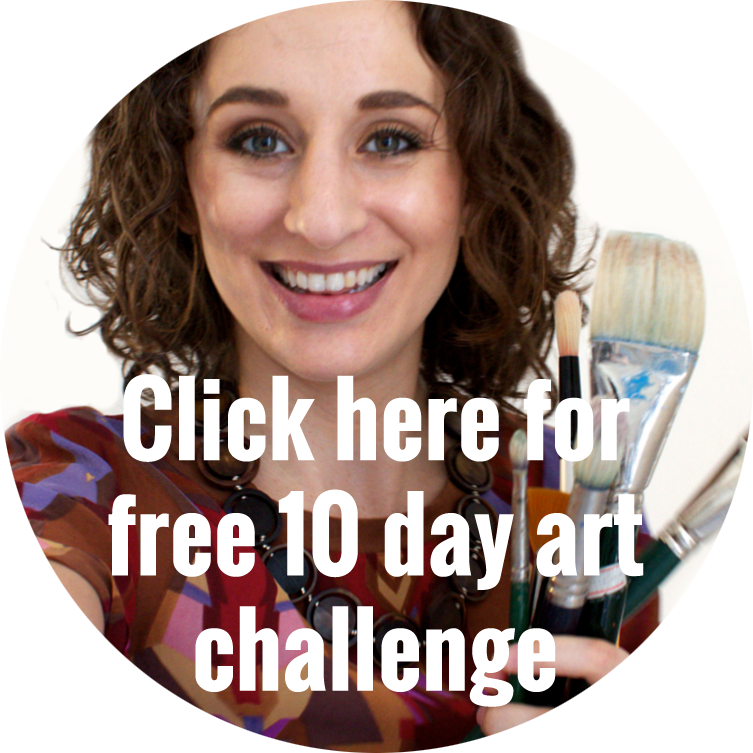A LONG LONG time ago on Artist Strong I shared a rubric for creative thinking, created by the Association of American Colleges and Universities. Today I want to walk through the 6 categories of assessment because it can be a great way to frame and reflect on your creative practice.

Rubric is “Reprinted [or Excerpted] with permission from Assessing Outcomes and Improving Achievement: Tips and tools for Using Rubrics, edited by Terrel L. Rhodes. Copyright 2010 by the Association of American Colleges and Universities.”
The Six Categories of Creative Thinking:
-
Acquiring Competencies
-
Taking Risks
-
Solving Problems
-
Embracing Contradictions
-
Innovative Thinking
-
Connecting, Synthesizing, Transforming
Acquiring Competencies
This category is all about learning the different strategies and skills within your domain.
Application: Can you identify which skills you have and what you need to do for developing them further? What new skills do you need to learn to be better at your creative practice?
Artist Strong example: Right now I’m creating an online course for creative play for visual artists. It’s launching in December. It will have weekly art assignments, a private forum for students to share their work and all kinds of great tutorial videos on different artist tools. I’m a teacher. All of that is fine and good and I’m really excited for it. But. I have to acquire new competencies. I’m learning how to video record and edit my tutorials, how to use a new online software to manage the forums I’m creating, etc. The format of my teaching has changed and I need to learn a whole series of new skills and strategies to make my course a success.
Taking Risks
Risk can come in the personal extension we experience trying something new, trying something with the potential of failure, extending yourself beyond the original idea or rules you work by, and/or trying out ideas that are unpopular. Application: What choices are you making creatively right now that make you a bit nervous? How are you extending yourself as an artist? What kinds of rules are you “breaking” in your art? Artist Strong example: I’ve been feeling stifled in my own art lately. I’ve created too many boxes that I had to fit in and I lost my enjoyment of my practice. After a good talk with a friend, I’ve put away my paint brushes. I’m taking a proper break from the traditional paint and canvas artworks. I am experimenting with smaller works, inspired by travel or drawn live (aka urban sketching). I am embroidering into my mini-paintings to complete them. This is seriously outside my comfort zone and normal use of artist materials.
Loading
Detail from my new work today. Really enjoying stitching into my #painting. #textiles #artstagram #artists View on Instagram
Solving Problems
Can you find solutions to obstacles in your creativity?
Application: What obstacles do you regularly face in your creativity? How do you go about solving them?
Artist Strong Example: An obstacle I face has to do with my assessing, reflective nature. I catch myself, all the time, judging my work and considering how to refine it while I’m in the middle of creating. This is the worst idea ever; if I reach that state it stalls my progress and I spend time refining when my work isn’t even ready for refinement. For this reason, I now use acrylic paint. It dries quickly, and reinforces my need to paint quickly. If I work fast, I can’t spend time thinking about what I should or shouldn’t be doing.
Loading
The underpainting continues. What do you think will be the final colors of this #painting? #art #artstagram #artistsofinstagram
Embracing Contradictions
I’ll quote directly from the rubric on this one: “Integrates alternate, divergent, or contradictory perspectives or ideas fully.”
Application: In what ways does your creativity work with conflicting or alternate ideas? How could your work better embrace divergent or differing concepts?
Artist Strong Example: I love this one. I have to embrace that I am an A Type Perfectionist AND an artist when it comes to my creative process. Many see those things as contradictions. Yet, knowing these qualities about myself helped me create a creative process that encourages production and successful completion of my work, such as my example for Solving Problems.
BE COURAGEOUSLY CREATIVE: Print out the rubric (free to download) and work through it with one specific creative practice/ activity. Where do you stand in terms of proficiency? What steps can you take to reach the next level? I want to hear about your process: what have you learned from this activity? Tell me all about it in the comments below.
And today a little Artist Strong Extra:
I suggest you take some time and look through the videos in this article on 99U. It has clips from all kinds of creatives talking about their creative process. Which one most applies to you?
Listen to today’s podcast:


Great examples, Carrie. I particularly like the one where use acrylic paint to encourage yourself to keep working. A practical strategy to combat self-sabotage.
Thank you Siobhan for taking the time to read and contribute. Have a wonderful, creative filled day 🙂
I’ve never seen creative thinking put “into a box”!!! This is an interesting way to analyze the creative process. Thanks for sharing this 🙂
Thanks Indre 🙂